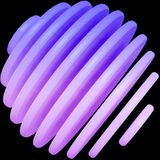Spruce tries to be customizable and straightforward. You can find some core principles and the main structure on this page.
- Where possible, we use elements and/or attributes to style elements, but it is still a class-based framework.
- We use Stylelint with a modified configuration with stylelint-config-sass-guidelines preset to quality control.
- We alphabetize the property declaration order. It is practical, no joke.
- We use mostly BEM when a more complicated structure is necessary.
- We try not to use px as units. Right now, it is only present at border values.
- We use modern Sass with
@useand@forward. - We mark the strings as strings, so we will wrap any value that is technically one of them with single quotations.
- We use trailing commas in the map declarations.
We use BEM, a simple naming convention that helps create manageable code for writing complex components. A simple example looks like this:
- Block: a component element, like
.btn. - Element: a child element of the component like
.btn__icon. - Modifier: a flag that modifies the component like
.btn--primary.
A classless framework doesn’t specify classes and special markup for your elements. You use regular HTML elements. The advantage is that you only need to load a CSS file and get many styling immediately.
We think this approach has more problems in the long run, so we use classes. Of course, we also style just elements where it is convenient (like text-related ones).
Spruce uses npm scripts to compile Sass and to do other tasks. The scripts are in the package.json file.
Our two main scripts are:
npm startis for development purposes. It will fire up the development preview (which is a sandbox for us), a pug-based, simple HTML page where you can see all the styled elements.npm run prodis for production. It will create the right compiled CSS files.
You can find the main code under the scss folder at the root. The .vscode folder contains a VS Code configuration file. The preview folder is a developer helper where we can see the effect of the modification right away.
sprucecss/
├─ .vscode/
├─ css/ // Compiled CSS folder
│ ├─ spruce.css
│ ├─ spruce.min.css
├─ js/
| |- cookie.js
├─ preview/ // Spruce preview for development
│ ├─ ...
├─ scss/ // Source .scss files, Spruce CSS itself
│ ├─ config/ // Variables
│ ├─ element/
│ ├─ form/
│ ├─ function/
│ ├─ mixin/
│ ├─ plugin/
│ ├─ print/
│ ├─ spruce.scss
├─ test/
├─ .gitignore
├─ package.json
├─ README.md
├─ ...If you plan to contribute first, please visit our contribution. Thank you!
Spruce uses Autoprefixer with the default configurations.
The browser support is flexible, but one of the goals of this framework is to be modern. We plan to support new features early, but we understand the browser landscape is not so simple. Please open an issue if you have any questions or ideas regarding this topic.


